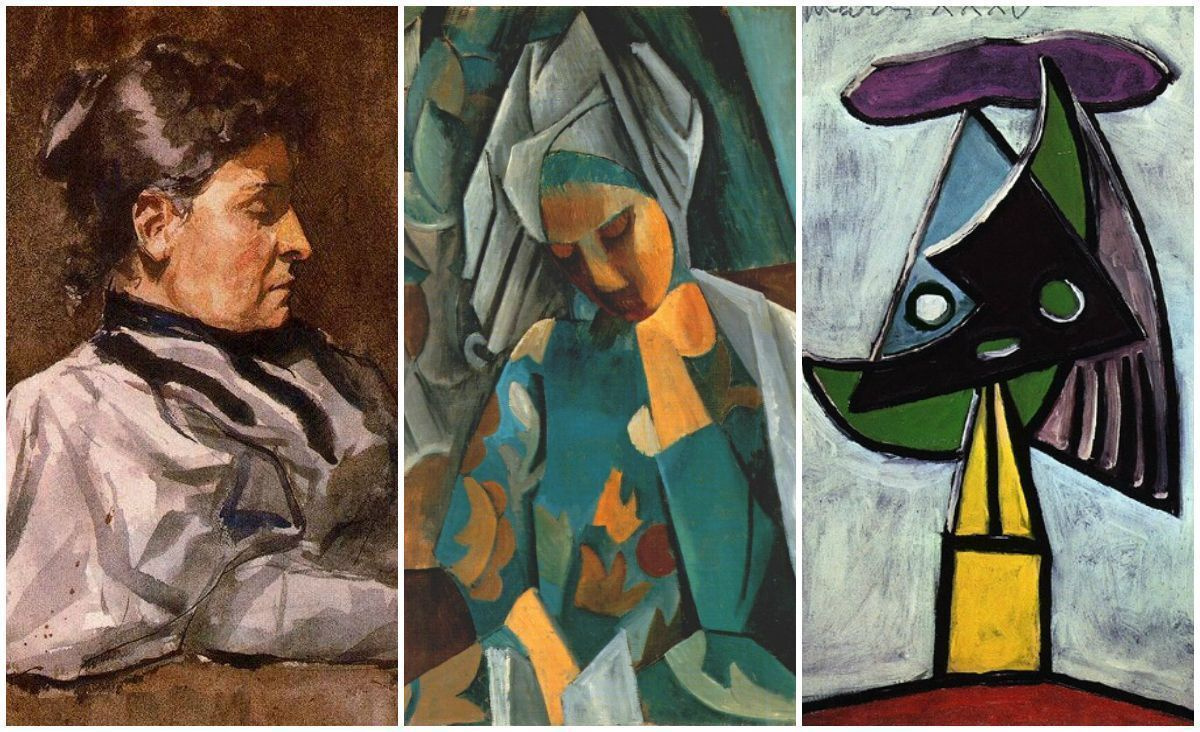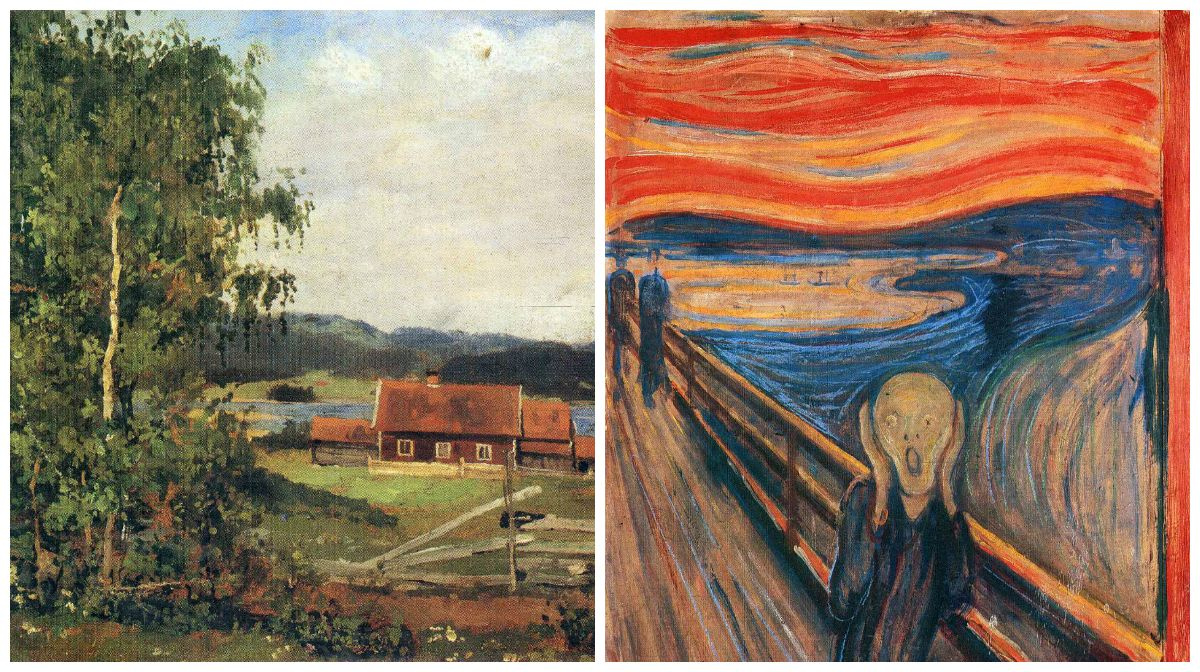What do the early works by Picasso, Pollock, Rothko and other artists, whose mature style we unmistakably recognize, look like? We compare the first experiments of geniuses and works demonstrating their own style. You will be surprised and find that even the most inveterate abstractionist can draw well…

Claude Monet

Claude Monet. An example of realism in the picture View At Rouelles, Le Havre (1858) and landscape
Impression. Sunrise (1872), which gave the name to Impressionism. Then, why would we need the second Shishkin?
I do what I can to convey what I experience before nature and most often, in order to succeed in conveying what I feel, I totally forget the most elementary rules of painting, if they exist.
CLAUDE MONET
CLAUDE MONET
Paul Gauguin

Paul Gauguin. Landscape with Poplars (1875) and A Breton Landscape. David’s Mills (1894) — even within the same genre, the artist’s style and colour changed beyond recognition.
Edgar Degas

Edgar Degas. The student’s A Roman Beggar Woman (1857) and Blue Dancers (1897), illustrating both Degas’s style and his favourite subject. Like many other greats, he began his path by imitating the classics
Edvard Munch

Edvard Munch. Landscape. Maridalen by Oslo (1881) painted by 18-year-old artist, and "The Scream" (1893): the author changed not only his style, but also his colour palette.
READ ALSO: Children’s works by 10 great artists
Egon Schiele

Egon Schiele. Impressionist Winding Brook (1906) landscape
, the artwork by a 16-year-old man and one of Schiele’s typical drawings, made a year before his death. Not only the style and palette have changed, but mainly the mood of the author.
Pablo Picasso

Pablo Picasso. The realistic Portrait of the Artist’s Mother (1896) and a surrealistic composition performed by the founder of Cubism — Woman with Flowers (1932). Which of the heroines do you think was pleased with the portrait?
Painting is a blind man’s profession. He paints not what he sees, but what he feels, what he tells himself about what he has seen.
PABLO PICASSO
PABLO PICASSO
Salvador Dalí

Salvador Dalí. In his Still Life (1918), there is no Surrealism yet. In the Living Still Life (1956), Surrealism
is already visible to the naked eye. It is also obvious that the artist has been inseparable with the realistic painting technique throughout his life.
If you refuse to study anatomy, the art of drawing and perspective, the mathematics of aesthetics, and the science of color, let me tell you that this is more a sign of laziness than of genius.
SALVADOR DALÍ
SALVADOR DALÍ
Henri Matisse

Henri Matisse. Classical Still Life with Books and Candle (1890) and Fauvism
, the innovative manner of painting, introduced by Matisse himself in his well known Dance (1910).
Wassily Kandinsky

Wassily Kandinsky. Like many avant-garde
artists he began his artistic experiments with the Impressionism — such as his early landscape
Akhtyrka — Autumn (1901), in which you still cannot recognize the author of the Composition No. 8 (1923) and other abstract paintings.

Kazimir Malevich argued that art developed from Impressionism
to Suprematism. He developed in the same way himself: starting with plein-airs à la Sisley and Pissarro (Spring Garden in Blossom, 1904), he came to his Black Square and things like Suprematism, Construction No. 18 (1915).
Actually, modern researchers of Malevich’s work do not consider all the impressionistic artworks that he himself dated to the beginning of the twentieth century to be early ones. It seems that he completed a number of impressionist paintings already in the 1920s and even later, but presented them as his old things so that his theory about the movement of modern art from Impressionism to Suprematism looked even more convincing.
Actually, modern researchers of Malevich’s work do not consider all the impressionistic artworks that he himself dated to the beginning of the twentieth century to be early ones. It seems that he completed a number of impressionist paintings already in the 1920s and even later, but presented them as his old things so that his theory about the movement of modern art from Impressionism to Suprematism looked even more convincing.
Jackson Pollock

Jackson Pollock. In the Going West (1934—1935) painting, his expressionism
is still very figurative, but the Convergence (1952) is already the clearest example of both his unique style and abstract expressionism
.
I want to express my feelings rather than illustrate them
JACKSON POLLOCK
JACKSON POLLOCK
Mark Rothko

Mark Rothko. The Untitled (Man with Green Face) (1934—1935) was painted by Marcus Rothkowitz (an artist who came to the USA from Dvinsk, Viciebsk province, only adapted his name in 1940). Any of the Expressionists could paint such a portrait. The painting United (Blue, Yellow, Green on Red), (1954) could only be painted by Rothko.
Piet Mondrian

Piet Mondrian. Village Church (1898) and Trafalgar Square (1945) — the approach to the architectural landscape
has changed over half a century, but the love for the intricacies of lines has remained!
Frida Kahlo
I paint self-portraits because I am so often alone, because I am the person I know best.
FRIDA KAHLO
FRIDA KAHLO
Gerhard Richter

Gerhard Richter. In this case, it is not only the comparison that is interesting. The artist recently refused to acknowledge his industrial landscape
painted in 1962 (pictured above). Art critics and collectors are in a panic: it seems that the famous abstractionist intends to edit his work retroactively and "withdraw his signatures" from his early works, which still had hints of realism. Of course, the author has the right to clean up his legacy and catalogues. But what about those who shell out money for his early experiments and considered it a good investment? The only ones who shouldn’t be worried are those who invested in Richter’s abstract compositions (as in the photo below).
Title illustration: portraits of women by early Picasso and Picasso, who found his own style.



















